EN 12464‑1 specifies lighting requirements for humans in indoor workplaces, all usual visual tasks are considered, including Display Screen Equipment (DSE).
Adequate and appropriate lighting enables people to perform visual tasks efficiently and accurately including tasks performed over a prolonged time period or of a repetitive nature. The degree of visibility and comfort required in a wide range of work places is governed by the type and duration of the activity. The lighting also affects circadian rhythms and mood as well as improving our performance and well-being.
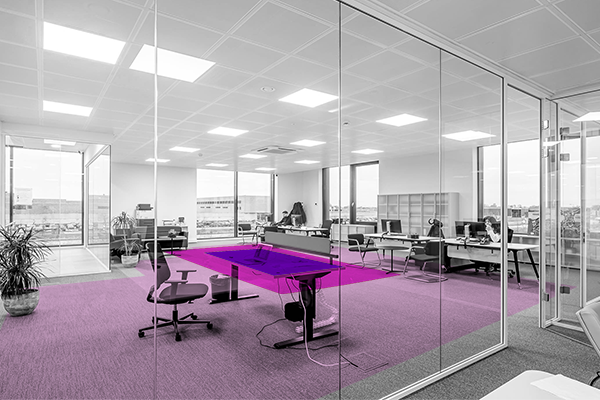
Areas to be lit are task and activity areas, the immediate surrounding area and background area, walls, ceiling and objects in the space.
The illuminance and its distribution on the task area and on its immediate surrounding area have a great impact on how quickly, safely and comfortably a person perceives and carries out the visual task.
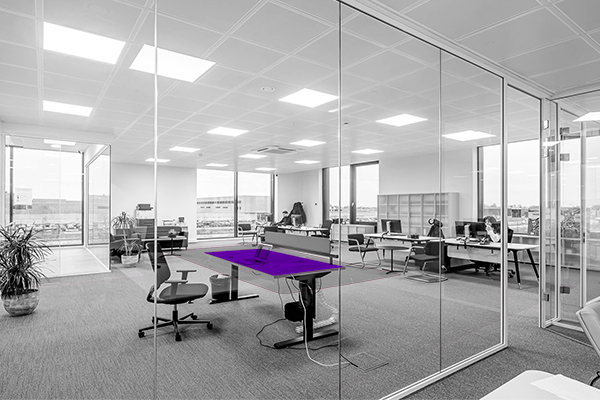
The Task area is any surface on which visual tasks are performed and can be horizontal, vertical or inclined. If size and/or location of the task area or activity area(s) is/are unknown, either:
- the whole area is treated as the task area; or
- the whole area is uniformly (Uo ≥ 0,40) lit to an illuminance level specified by the designer.
The requirements for task/activity areas are given in Tables. Below is an example of the requirements for offices.
| Type of task / activity area | Ēm (lx) |
Uo | Ra | RUGL | Ēm,z (lx) |
Ēm,wall (lx) |
Ēm,ceiling (lx) |
|
| required | modified | Uo ≥ 0,10 | ||||||
| Filing, copying, etc. | 300 | 500 | 0,40 | 80 | 19 | 100 | 100 | 75 |
| Writing, typing, reading, data processing | 500 | 1000 | 0,60 | 80 | 19 | 150 | 150 | 100 |
| Technical drawing | 750 | 1500 | 0,70 | 80 | 16 | 150 | 150 | 100 |
| CAD work stations | 500 | 1000 | 0,60 | 80 | 19 | 150 | 150 | 100 |
| Conference and meeting rooms | 500 | 1000 | 0,60 | 80 | 19 | 150 | 150 | 100 |
| Conference table | 500 | 1000 | 0,60 | 80 | 19 | 150 | 150 | 100 |
| Reception desk | 300 | 750 | 0,60 | 80 | 22 | 100 | 100 | 75 |
| Archiving | 200 | 300 | 0,40 | 80 | 25 | 75 | 75 | 50 |
Note: Ēm,z is referred to maintained average cylindrical illuminance
The requirements for the specific tasks and activities are given by Ēm (maintained illuminance), Uo (overall uniformity), Ra (colour rendering index) and RUGL (UGR, unified glare rating).
However, it is recommended to increase the value of maintained illuminance, that you can find in column “required”, with values of column “modified” depending on the context modifiers:
- visual work is critical;
- errors are costly to rectify;
- accuracy, higher productivity or increased concentration is of great importance;
- task details are of unusually small size or low contrast;
- the task is undertaken for an unusually long time;
- the task area or activity area has a low daylight provision;
- the visual capacity of the worker is below normal.
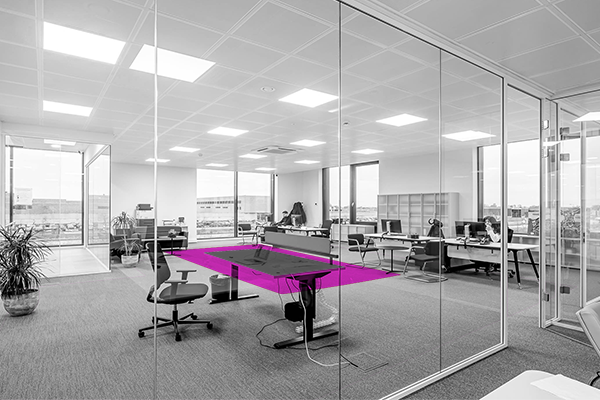
The surrounding area should be a band with a width of at least 0,5 m around the task area within the visual field.
The illuminance of the immediate surrounding area shall be related to the illuminance of the task area or activity area, according to the Table below, large spatial variations in illuminance around the task area or activity area can lead to visual stress and discomfort.
Illuminance uniformity in the immediate surrounding area shall be Uo ≥ 0,40.
| Illuminance on the task area or activity area Ēm (lx) |
Illuminance on immediate surrounding areas lx |
| ≥ 750 | 500 |
| 500 | 300 |
| 300 | 200 |
| 200 | 150 |
| ≤ 150 | equal to task area |
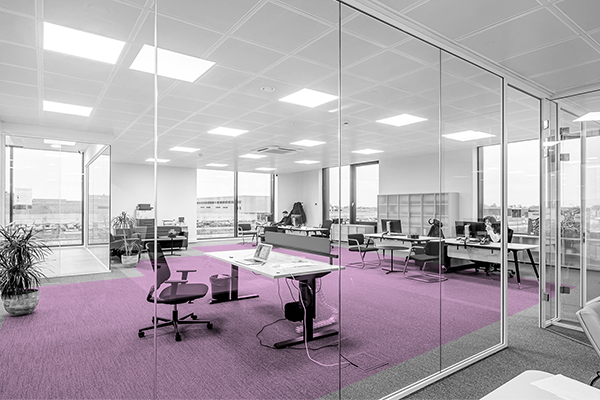
The background area is a horizontal area on floor level. It is adjacent to the immediate surrounding area within the limits of space and shall be illuminated with a maintained illuminance of 1/3 of the value of the immediate surrounding area.
On the background area, the walls and the ceiling the illuminance uniformity shall be Uo ≥ 0,10.
Glare is the unpleasant sensation produced by bright areas within the visual field, such as lit surfaces, parts of the luminaires, windows and/or roof lights. Glare shall be limited to avoid errors, fatigue and accidents.
A particularly important feature in the lighting of VDU workstations is the avoidance of:
- indirect glare from shiny surfaces (VDUs) at the workstation;
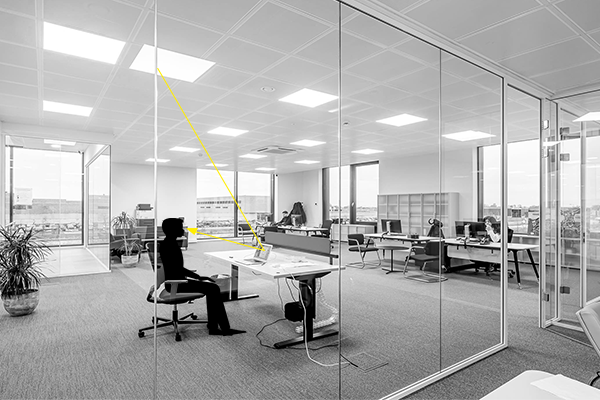
- direct glare from luminaires.
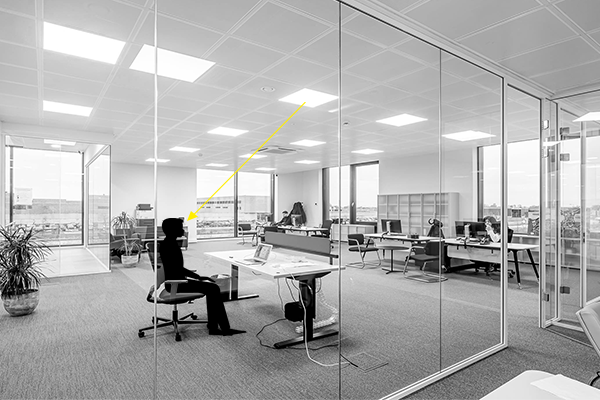
EN 12464-1 describes the requirements a VDU workstation must meet. It contains stipulations on the luminance limits for luminaires that might be reflected in VDUs.
VDU (visual display unit) workstations form the basis of a suitable working environment in administrative, service, sales or technical areas. To enable concentrated working at a VDU, the visual environment must not have a disruptive effect when recognising objects on the screen. To be able to guarantee this, the illumination of a VDU workstation must meet particular requirements.
The regulation gives the limits of the average luminaire luminance at elevation angles of 65° and above from the downward vertical, radially around the luminaires, for work stations where display screens which are vertical or inclined up to 15° tilt angle are used.
EN12464 takes into consideration two graphical user interface cases:
CASE A:
positive polarity (light background and dark content) and normal requirements concerning colour and details of the shown information, as used in office, education, etc.

LCD < 3000 cd/m2
CASE B:
negative polarity (dark background and light content) and/or higher requirements concerning colour and details of the shown information, as used for CAD, colour inspection, etc.
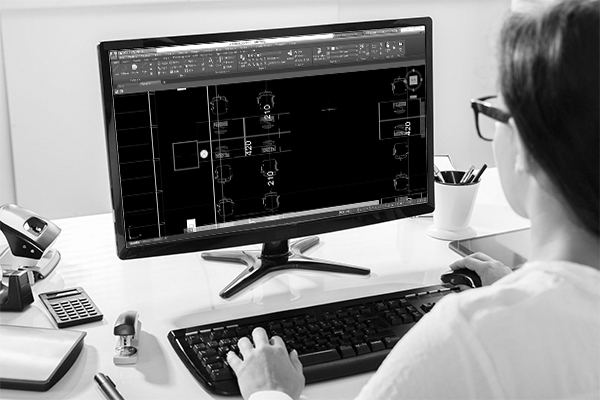
LCD < 1500 cd/m2
A further criterion for assessing glare is the UGR (unified glare rating) procedure. This procedure was developed by the International Commission on Illumination (CIE) with the aim of standardising the glare assessment systems in Europe. The glare assessment according to UGR, mostly in table form, also takes into account the arrangement of the luminaires in the room, the luminance of the luminaires as well as the background luminance (ceiling, walls, floor) and thus the glare of the whole lighting installation. In this situation the lower the UGR value is, the smaller is the probability of glare. The UGR value thus obtained is then finally compared with the so-called glare indices (RUGL), which show the maximum UGR limits. For office spaces, for example, a maximum of 19 is recommended.
← Activity area →
LOW/MEDIUM
UGR < 19
Luminanza 3000 cd/m²
ELEVATED
UGR < 16
Luminanza 1500 cd/m²

Each person reacts differently to the stimulae in the environment around them. Sensitivity to the luminance present in a person’s field of vision and the resulting evaluation is always subjective.
We need to also consider that retinal illuminance declines with age due to reduced pupil size and increased spectral absorption of the crystalline lens. It is reasonable for lighting practitioners to increase task illuminance to help older people compensate for the age-related losses in retinal illuminance.
For good results the selection of the luminaires taking into account their photometric properties and above all the correct arrangement of the luminaires in the room is crucial.